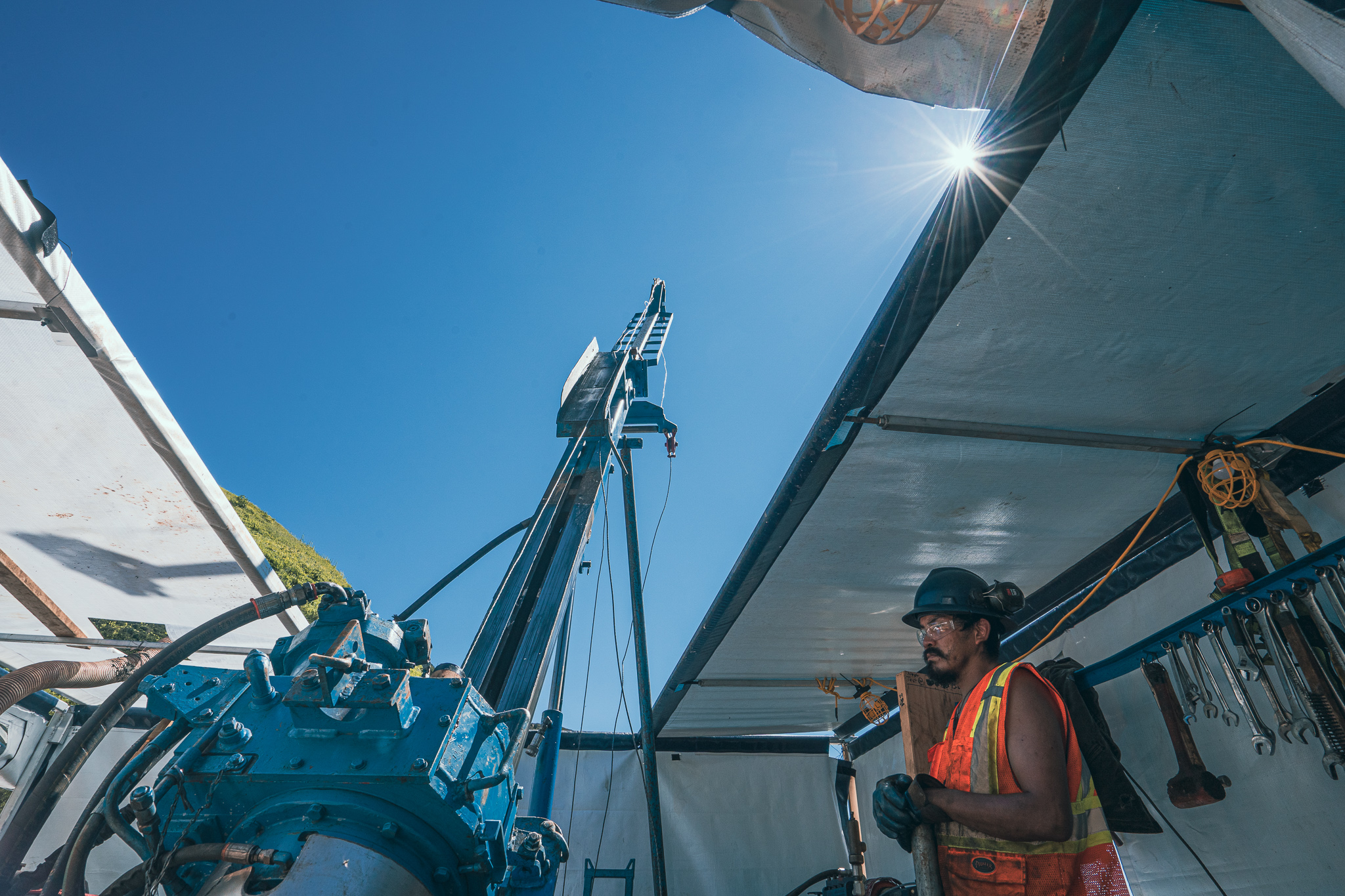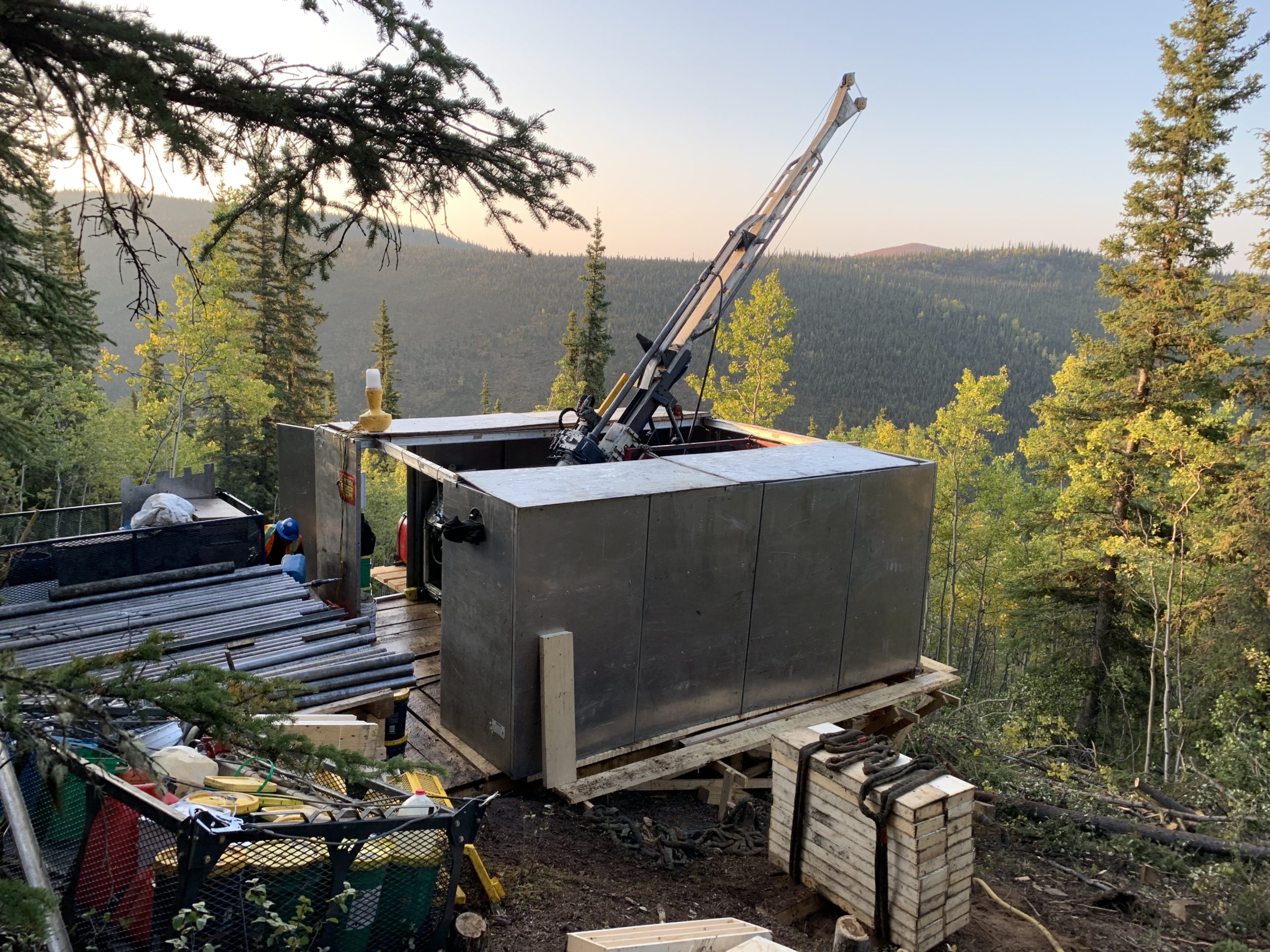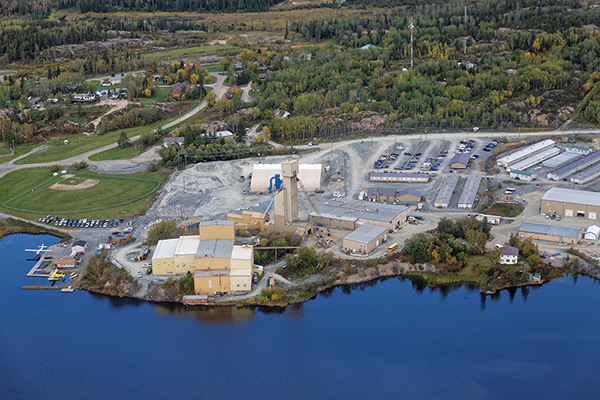A Point in Time
Celebrating Canada’s mining history and the 140th anniversary of Canadian Mining Journal – one of Canada’s oldest continuously published magazines

When this publication was born in 1882 (no, Marilyn Scales and I were not around then!), it was a very slim newsletter named The Canadian Mining Review. Within five years it had taken on a hot-headed and bold young Scottish cricketer/editor, B.T.A. Bell. He not only transformed The Review into a national must-read monthly, but organized and energized the fledgeling mining groups across the country. He tried his best to rout out the scoundrels, while cajoling the country’s politicians and associations to get together. In researching for this article, I dove down many rabbit holes and came up extremely impressed with the work of Bell. He was my predecessor as editor by a century (he started at The Review in 1887, while I started at CMJ in 1986).
This piece is a timeline pointing to the major events and mining camps that have shaped Canada’s mining industry to 2022. It was hard to choose the keepers, but boiled down to an intense discussion with my husband George Werniuk (P.Geo.). The sidebars are memories from a few of the many former editors.
My research was made easier by librarians who have rescued old print publications by making them digitally available, often online. Now that it’s easy, take the opportunity to look back into the old mining publications. Considering the thousands of mines that have come and gone, and sometimes come back, it makes one appreciate how special the longest-lived mines are, like the Dome gold mine in Timmins (1910 to 2017), the Sullivan silver-lead-zinc mine in Kimberley (1895 to 2001), and the Stobie (1886 to 2017) and Creighton (1901 to present) nickel-copper mines in Sudbury. The history of each mineral project remains incredibly valuable and will not be lost as the paper decays. In the archives you will also find many of the hot topics of the day, that are still being debated.
Thank you to Nean Allman and the Vintage Women in Mining for ideas and leads, and to Johanne Roux at the Geoscience Library of the Ontario Geological Survey in Sudbury, Mark Pellegrino of The John P. Robarts Research Library at University of Toronto Libraries, and Michel Brideau of the Public Services Branch of Library and Archives Canada for locating and scanning past issues for this article.
4000 BC – ISLE ROYALE
From 4000 BC to 1000 AD, mining of native copper from up to 5,000 pits in the Keweenaw Peninsula and Isle Royale, Lake Superior; First Nations trading in copper in Lake Superior area about 4000 BC.
200 BC to 200 AD – COBALT
From 200 BC to 200 AD, First Nations trading in native silver from Cobalt, ON area.
1672 – SYDNEY
Start of mining coal seams at Sydney, NS in 1672; in 1720, mining of coal by “regular methods” at Cow Bay, Cape Breton Island, NS; in 1830, first mine shaft sunk at Sydney. Coal and steel industries decline after the Second World War; the steel plant and last coal mine close in 2001.
1842 – MONTREAL
Geological Survey of Canada founded in Montreal in 1842 by William Logan; moves to Ottawa in 1880.
1848 – Lawrencetown
Gold discovered in Lawrencetown, NS in 1848; almost 100 operating gold mines in Nova Scotia by 1899.

1860
Start of railway building period in the 1860s, linking communities and providing efficient means of shipping mine production.
1861 – CARIBOO GOLDFIELDS
Discovery of rich gold deposits in the Cariboo district of BC in 1861. The Barkerville placer gold mines were worked from 1864 to the 1930s, producing 4.5 million oz of gold. In 2020, Osisko Development Corp. proposed to construct and operate the Cariboo Gold Project, an underground gold mine and associated infrastructure, in the historic Cariboo mining district.
1866 – GODERICH; WINDSOR
Salt bed discovered at Goderich, ON in 1866 while drilling to explore for oil, and salt has been mined from the Goderich site since then. The Windsor salt mine opened in 1893. Both mines are still in operation.

1867
Canada born as a Dominion in 1867
1870 – MONTREAL
Canada’s first school of mines established in 1870 at McGill University in Montreal.
1878 – THETFORD MINES
Johnson Asbestos Co. mine opens in 1878 at Thetford Mines, QC followed by WH Jeffrey mine at Danville and the Bell Asbestos and other mines in area. Peak annual production of chrysotile asbestos in Canada in 1973, totalling 1.7 million tonnes. No asbestos mining in Canada in 2022.
1879 – CROWS NEST PASS
Opening of Crows Nest Pass coal fields in 1879, BC; followed in the early years of the 20th Century by the Elk Valley coal mines, four or which are in operation today.
1882 – OTTAWA
The Canadian Mining Review first published in Ottawa in 1882. From 1887, BTA Bell is editor and later owner of The Review until his death in 1904.
1886 – SUDBURY
Copper-nickel ore uncovered in Sudbury, ON area in 1882, near future Murray mine. Copper Cliff, Stobie (closed in 2017) and Evans mines started up in 1886. In 1888, Copper Cliff smelter blown in; still in operation as Canada’s longest operating smelter. Victoria and Creighton (still operating) mines open in 1901 and Little Stobie in 1902. Falconbridge mine opens in 1929; Falconbridge smelter blown in, in 1930.
1891 – TRAIL
Lily May orebody staked in 1889 at Trail Creek, the start of the Red Mountain (Rossland) camp in West Kootenay region; mine opens in 1891. Trail smelter begins smelting ore from Rossland in 1896, and is still in operation.

1895 – KIMBERLEY
Staking of claims on Sullivan silver-lead-zinc deposit in 1892, marking beginning of the Sullivan camp in Kimberley, BC. Sullivan mine opens in 1895, and is at one time the largest underground lead-zinc mine in the world; large-scale development of mine in 1947; the mine closes in 2001.
1896 – DAWSON CITY
Discovery claims staked in 1896 on Bonanza (Rabbit) Creek near Dawson City, YT leading to Klondike staking rush in 1898 – one of the greatest gold rushes in history. Production of placer gold from Klondike peaked in 1900.
1896
At the urging of Canadian Mining Review editor BTA Bell, in 1896 all existing provincial groups affiliate to form Federated Canadian Mining Institute, with Bell as its first Secretary. Renamed Canadian Mining Institute in 1898; renamed Canadian Institute of Mining, Metallurgy and Petroleum (CIM) in 1990
1904 – SQUAMISH
Britannia copper-zinc orebody staked in 1898 near Squamish, BC; production begins in 1904, and mine closes in 1974. Now a mining museum.
1904 – COBALT
Discovery of silver and cobalt in 1903 along railroad line in Timiskaming region, leading to a staking rush and building of town of Cobalt, ON. Production begins in 1904 at Trethewey, LaRose, McKinley-Darragh and Nipissing mines. In 1911 there are 34 mines producing over 30 million oz. silver annually. Production slows to a trickle after the 1930s. By the 1960s, the area has produced over 420 million oz. of silver. There is no production after the 1980s.
1907
First issue of The Canadian Mining Journal published in 1907 in Montreal, incorporating The Canadian Mining Review

Congratulations to the Canadian Mining Journal on its 140th anniversary – a breathtaking span that covers nearly the entire history of mining in Canada. When I became editor in 1984, that posting turned out to be a crucial phase in my life journey. It was my first management role in a career that later led me to start several mining companies, with operating mines in four countries and thousands of employees.
– Kerry Knoll, executive chairman and director, Generation Mining
1910 – TIMMINS
The Dome, Hollinger and McIntyre gold deposits staked in 1909 at Porcupine Lake near Timmins, ON. Dome mine opens in 1910; destroyed by fire along with Hollinger mine and Porcupine camp in 1911 with great loss of life. Mines restart in 1912. Dome mine closes in 2017.
1913 – KIRKLAND LAKE
Discovery in 1911 of gold and staking of Wright-Hargreaves and Sylvanite deposits, Kirkland Lake, ON. Production years for the Kirkland Lake area gold mines include Tough-Oakes (Toburn) (1913-53), Teck-Hughes (1915-65), Lake Shore (1918-87), Kirkland Lake (1919-60), and Wright-Hargreaves (1921-65). Kerr mine opens in nearby Virginiatown in 1911, becomes Kerr-Addison mine in 1938 and closes in 1996.

1914
World War I (1914-18) increases demand for metals, but also takes labour for war effort, e.g., Dome mine closed from 1917 to 1919 due to labour shortage

1915
The Northern Miner weekly newspaper established in Cobalt, ON; moves to Toronto in 1929
1927 – FLIN FLON
Discovery in 1914 of copper-zinc mineralization at Flin Flon, MB; mining begins in 1927. Concentrator, copper smelter and zinc plant start-up in 1930. Mining begins at Trout Lake mine in 1982, and at 777 mine in 2004.
1917 – ROUYN-NORANDA
Discovery of Horne copper-gold deposits at Rouyn-Noranda, QC in 1920 leads to a staking rush. The Horne mine (1927-76) recovers 11.6 million oz. gold and 1.13 million tonnes of copper. The Horne copper smelter opens in 1927, still in operation.
1928 – BUCHANS
Discovery in 1905 of lead-zinc-copper deposits at Buchans, NL is first discovery using geophysical methods; copper-lead mine opens in 1928 and closes in 1979.

1929
Stock market crash on October 29, 1929 leads to weakness in investment and Great Depression
1929 – VAL D’OR
Sigma and Lamaque gold deposits staked in 1920 in Val-d’Or, QC. Siscoe gold mine operates 1929-49. Lamaque mine opens in 1935 and Sigma in 1937, together producing more than 10 million oz. gold; now combined as one project, which re-opens in 2019. Peak year of gold mining in Abitibi-Temiscamingue region of Quebec in 1942, with 42 mines operating. Louvicourt copper-zinc-gold mine operates 1994 to 2005; Kiena gold mine 1981 to 2002. In nearby Cadillac area, Thompson Bousquet gold mine opened in 1978, the Doyon gold mine in 1979, and the LaRonde polymetallic mine in 1988. LaRonde remains in production as well as Bousquet (now called “LZ5”).
1931 – SHERRIDON; FORT SASKATCHEWAN
Sherritt Gordon claims staked in 1919, Amisk Lake, SK; Sherridon mine operates from 1931 to 1951. In 1952, Sherritt relocates new nickel refinery to Fort Saskatchewan, AB; it starts up in 1954.

1932
Ontario Prospectors Association founded in 1932; becomes Prospectors and Developers Association in 1957, and Prospectors & Developers Assoc. of Canada (PDAC) in 1987
1933 – PORT RADIUM; PORT HOPE
Discovery in 1930 of pitchblende deposits, at Port Radium, Great Bear Lake, NT. Eldorado uranium-radium mine opens in 1933 as well as refinery in Port Hope, ON to treat concentrate and cobbed ore. Mine supplies uranium to the US WWII effort, notably the Manhattan (atomic bomb) project. Mine closes in 1982; the refinery remains open today.
1938 – RED LAKE
Discovery of gold including the Howey deposit in 1925 leads to staking rush in Red Lake, ON; among the earliest to use air transport. The first rush results in five gold mines including the Madsen mine (1938-76 and re-opens in 2021 as Pure Gold mine) and the Cochenour-Willans mine (1939-71).
Second gold rush results in 10 more mines including Campbell mine in 1947 and adjacent Dickenson mine in 1948. These two mines join as one operation under one owner in 2006, and are still in production.
1938 – YELLOWKNIFE
Staking rush in Yellowknife, NT in 1934 leads to Con gold mine opening in 1938 (closes 2003). Second staking rush in 1944 leads to Giant gold mine opening in 1948 (closes in 2004).

Congratulations CMJ! What a rewarding 45-year career this magazine has been. The industry is ever changing, and my travel bug has been satisfied from the Arctic to the Andes and Europe. I have seen corners of Canada I never would have thought to visit without the lure of the minerals industry. Everyone I met patiently answered my questions, especially Richard Fish, the first editor I worked with. I thank every one of them for contributing to the success of CMJ.
– Marilyn Scales, CMJ staff writer since mid-1970s

1939
World War II (1939-45) increases demand for certain metals, and causes labour shortages.
1951 – MURDOCHVILLE
Copper deposits discovered in 1921 in Murdochville, Gaspé region, Quebec. Mining begins at Gaspé Copper Mines in 1951, with copper smelter starting up in 1955. Mining began at Needle Mountain in 1955, and at Copper Mountain in 1968. Mining operations cease in 1999, and smelter closes in 2002.
1953 – WOLLASTON LAKE; BEAVERLODGE LAKE
Discovery in 1950 of uranium in the Beaverlodge Lake, SK area. Ace uranium mine opens in 1953, and Rix mine in 1954. Discovery of Rabbit Lake uranium deposit in 1967 in Athabasca Basin; Rabbit Lake mine opens in 1975 (closes 2016); Cluff Lake mine opens in 1981 (closes 2002); Key Lake mine opens in 1983 (closes 1999). McClean and McArthur River mines open in 1999, Cigar Lake in 2014; all three continue to operate.
1954 – LABRADOR CITY
Iron ore mining begins in 1954 at Ruth Lake No. 3 and Gagnon C mines, in Labrador Trough of Quebec’s North Shore and western Labrador, near Labrador City. Wabush mine opens in 1960, and Smallwood (Wabush No. 5) and Carol Lake iron mines in 1962.
Mont Wright mine opens in 1974 and continues to operate. The Scully mine closes in 2014, but later re-opens. The Bloom Lake mine opens in 2010, and re-opens in 2018.
1955 – ELLIOT LAKE
Blind River uranium deposit discovered near Elliot Lake, ON in 1953. Pronto mine opens in 1955, Quirke Lake mine in 1956, and Denison mine in 1957. Elliot Lake uranium production peaks in 1959. Last mine in operation, Stanleigh mine, closes in 1996.

For almost a century and a half, CMJ has been the predominant mining authority in Canada and around the world, and I am proud to count myself as one of its editorial alumni. The magazine left me with memories – from the Polaris Mine, the most northerly base metal mine in the world, to the Barrick Gold operations in Nevada, and production facilities in Japan.
– Scott Anderson, CMJ managing editor, 1988-91
1958 -SASKATOON
Potash discovered in Saskatchewan in 1946; initial production is in 1958 at Patience Lake mine near Saskatoon, SK. Shaft completed in 1962 at K-1 mine at Esterhazy, which becomes the world’s largest potash mine; Allan, Cory and Lanigan mines open in 1968.
1961 – THOMPSON
Thompson nickel deposit discovered in 1956 at Mystery Lake, MB. Thompson mining, smelting and refining operations begin in 1961. Smelting and refining close in 2018, but mining continues.
1962 – KAMLOOPS
Highland Valley porphyry copper deposit discovered near Kamloops, BC in 1955. Bethlehem (Valley Copper) mine opens in 1962, Lornex mine in 1969, and Highmont mine in 1980. Highland Valley operations continue. Afton copper deposit discovered nearby in 1972, and mine opens in 1977, followed by Ajax, Crescent and Pothook pits in 1978. Afton-Ajax mine closes in 1997.

1964
Windfall Oil & Mines scandal, leads to a Royal Commission investigation into stock price manipulation
1964 – BATHURST
Discovery of massive sulphide deposit in 1952 in Bathurst, NB area leads to opening of Brunswick No. 12 zinc-lead mine in 1964 and Brunswick No. 6 in 1966 (closes in 1983). Lead-zinc smelter opens in 1967 at Belledune, NB. Operations cease in 2013.
1965 – TIMMINS
Discovery in 1963 by Texas Gulf Sulphur of Kidd Creek zinc-copper-silver massive sulphide by airborne and ground geophysics, near Timmins, ON. Mine opens in 1965; development of Mine D begins in 2000. Smelter and refinery close in 2010; mine remains open.
1978 – FORT McMURRAY
Production begins in 1978 at Syncrude, the world’s largest oil sands mining operation near Fort McMurray, AB.
1979 – HEMLO
Gold first discovered in the Hemlo, ON area in 1869 and then 1944; re-staked in 1979. Golden Giant and David Bell gold mines open in 1985, and Williams mine in 1986. Golden Giant closes in 2005.

1983
US EPA plans to ban key products containing asbestos, resulting in staged end to the uses of asbestos in manufacturing
1983 – TUMBLER RIDGE
The first report of coal fields in Peace River district, BC is in 1879. Production begins in 1983 at Bullmoose coal mine near Tumbler Ridge, BC (closes 2003); Quintette mine opens in 1983 (closes in 2000).
1995 – STEWART
Discoveries in 1988 led to the opening of Eskay Creek gold-silver mine in 1995, Stewart, BC; closed in 2008. It was the highest grade gold mine in the world when in production, with average grades of 45 g/t gold and 2,224 g/t silver.
1997
Bre-X scandal: the company’s 50-million oz. gold deposit in Busang, Indonesia is revealed as an elaborate fraud, negatively affecting mining stocks and investments for many years
1998 – LAC DE GRAS
Kimberlite pipes discovered at Point Lake near Lac de Gras, NT in 1991 triggering a diamond staking rush in 1992; Ekati, Canada’s first diamond mine, opened as a pit in 1998, adds underground mining in 2002, and continues today. Diavik diamond mine opens in 2003, the year Canada becomes third most important diamond-producing country in the world; Diavik continues operating. Snap Lake mine operates from 2008 to 2015 as an underground mine. Gahcho Kwé mine opens in 2016 and continues.
2005 – VOISEY’S BAY
Discovery of major copper-nickel deposits in 1994 at Voisey’s Bay, Labrador; acquired by Inco in 1996. Mine opened in 2005 and continues to operate.
Sources of archives of Canadian mining publications
At www.canadiana.ca you can find digital versions of The Canadian Mining Review, The Canadian Mining & Mechanical Review and The Canadian Mining Journal from 1883 through 1920.
A full collection of the bound issues or microfilm of The Canadian Mining Journal, The Northern Miner and other Canadian mining publications can be found in the National Library in Ottawa as well as the libraries of provincial geological surveys and universities. There is a delightful summary of the previous sixty years of mining (“The Pattern of the Years”) published in the November 1939 issue of CMJ. All volumes up to 2000 include an annual index. CMJ’s digital archives dating from 2000 to the present can be found at www.canadianminingjournal.com.
“A Chronology of Minerals Development in Canada” is a detailed timeline of Canadian mining events that stretches from 9,000 years ago to 2005. This was first published in the CIM Bulletin and can now be found at https://publications.gc.ca/site/eng/100601/publication.html. It also formed the appendix to CIM Special Volume 52, 2000, A Century of Achievement – The Development of Canada’s Minerals Industries, published to commemorate the centennial of the CIM’s founding in 1898.
The oral history project From Rock to Reality includes 82 interviews (and counting) of Canadian mining notables that itself is part of the Mining and Metallurgy Legacy Project. The latter’s organizers included the CIM MetSoc and the Canada Museum of Science & Technology. Check out this URL for links to the articles and interviews: https://ingeniumcanada.org/centre/the-mining-and-metallurgy-legacy-project.





Comments
Bob Morris
Great review, makes one proud to be in the industry!!